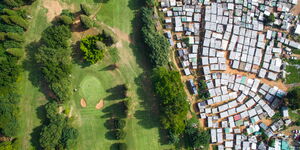Scientists have discovered new evidence of early man in Panga Ya Saidi cave, Kilifi County dating back 78,000 years.
In the past, archeological excavations have usually taken place in the Rift Valley, especially in Turkana County where the most complete early human skeleton ever known as Turkana Boy was found.
Archaeologists from Germany's Max Planck Institute for the Science of Human History, in collaboration with the National Museums of Kenya, found the first evidence of early human life in the Panga ya Saidi cave in Kilifi.
Their findings represent what researchers say is the longest archaeological sequence from the Middle Age to the Iron Age as there is evidence of gradual developments and innovation in terms of culture, technology and symbolism.
“As the cave environment underwent little variation over time, humans found the site attractive for occupation, even during periods of time when other parts of Africa would have been inhospitable.
[caption caption="The path leading to Panga ya Saidi cave"] [/caption]
[/caption]
“This suggests that humans exploited the cave environment and landscape over the long term, relying on plant and animal resources when the wider surrounding landscapes dried,” their report reads in part.
The researchers disclosed that analysis was carried out on plants, animals and shells from the cave.
It was also observed that over time, humans adopted smaller tools for their activities.
“The miniaturisation of stone tools may reflect changes in hunting practices and behaviours,” the report noted.
Among things the archaeologists unearthed were 65,000-year-old ostrich eggshell beads, marine shell beads, and worked ochre.
[caption caption="Worked artefacts from Panga ya Saidi cave (from left to right): worked red ochre; bead made of a sea shell; ostrich eggshell beads; bone tool; close-up of the bone tool showing traces of scraping (Courtesy)"] [/caption]
[/caption]












